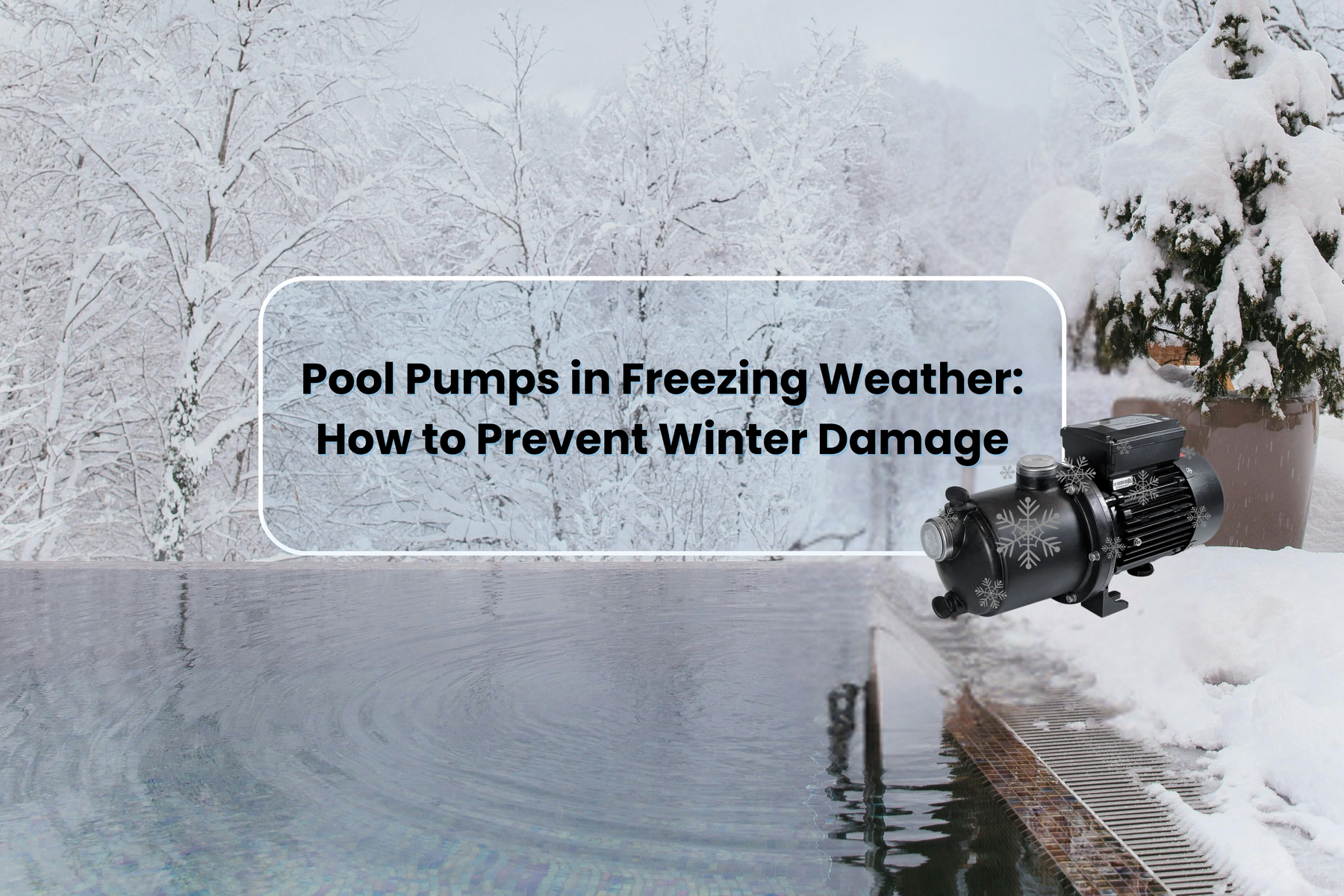
Pool Pumps in Freezing Weather: How to Prevent Winter Damage
Protecting Your Pool Pump in Freezing Weather
Don’t Let Your Pool Pump Turn Into a Popsicle.
You need to winterize your pool pump - or it could freeze, crack, and cost you a small fortune. Want to avoid a pricey repair bill and a springtime pool disaster? We’ll show you how to protect your pool pump the easy (and affordable) way.
Understanding the Risk of Freezing Temperatures
If you’ve ever left a soda can in the freezer, you already know what happens when water turns to ice. It expands. And when that happens inside your pool equipment, it’s not just a mess - it’s expensive.
Once freezing temperatures hit, your pool pump and plumbing are on the front line. All it takes is one cold night for still water in the pipes or pump to expand and crack something important. This kind of damage is often invisible until things thaw out.
By then? You’re staring down a repair bill that could’ve been avoided with a few simple steps.
How Freezing Damages Pool Equipment
When water inside your pump freezes, it puts pressure on plastic and metal components. Cracks form in the pump housing, pipes can split, and filters can warp. Even minor cracks can lead to leaks that make the whole system useless until it’s repaired or replaced.
The worst part? You might not realize there’s a problem until spring. That’s when you flip the switch and suddenly hear a hiss, drip, or loud grind from your pump.
Immediate Actions During a Freeze
Let’s say the freeze arrives earlier than expected. Don’t panic - there are a couple of quick things you can do to keep your pump safe.
Continuous Pump Operation
Running the pump keeps water moving, and moving water is a lot less likely to freeze. If the temperature drops below 40°F at night, it’s a good idea to let the pump run non-stop until things warm up.
Even just overnight operation can be enough in most mild freezes. If your system allows it, set a timer or switch it to manual run mode.
Some folks even run their system during the day when temps stay low - just to be safe.
Utilizing Freeze Protection Systems
Many newer pool systems come with freeze sensors built in. These sensors kick the pump on when it gets cold enough to risk freezing.
If your pump doesn’t have one, don’t worry. You can install a freeze protection timer or controller. Some brands offer compatible controllers designed to prevent cold damage.
It’s a small upgrade that could save you hundreds later.
Essential Preparations and Maintenance
Freezing weather doesn’t sneak up on everyone. If you’ve got time to prepare, even better. Here’s how to set your pool up for winter success.
Maintaining Proper Water Levels
Keep an eye on the pool’s water level. Too low, and the pump might run dry. Too high, and the water can flood into the skimmer or equipment area during a freeze.
Aim to keep it halfway up the skimmer opening. That’s the sweet spot for winter operation.
Cleaning and Debris Removal
Leaves, sticks, pine needles - get rid of them. Debris blocks water flow, which slows circulation and raises the risk of freezing.
Clean the skimmer basket, pump basket, and filter. If the water can move freely, it’s less likely to freeze.
Plus, clean equipment means fewer surprises come spring.
Insulating Exposed Plumbing
If your pump and pipes are out in the open, insulation is a must. Foam pipe covers and weatherproof blankets can help a lot.
You don’t need anything fancy - even a thick towel and a tarp will help in a pinch. Just be sure the insulation stays dry and secure.
If you want a longer-term solution, check out proper pump covers and insulated wraps. These are made to fit snugly and last all winter.
Handling Power Outages and Extreme Cold
Losing power during a deep freeze is the nightmare scenario. If your pump can’t run and temps are dropping, act fast.
Draining Equipment During Power Loss
When the power goes out, your first move should be to drain the pump, filter, and heater. This prevents water from sitting in the equipment and freezing.
Locate the drain plugs (usually at the bottom of the pump and filter), unscrew them, and let the water flow out. Don’t forget to leave the plugs off until spring to avoid trapping any leftover moisture.
Store the plugs somewhere safe so you don’t lose them.
When to Seek Professional Assistance
If you didn’t get to winterize in time or your pump looks like it might already be damaged, don’t try to fix it yourself.
Forcing frozen parts to move can break them. And turning the pump back on before inspecting everything can cause even more damage.
A pool pro can inspect the system, fix cracks, and make sure your pool pump is safe to run when the warm weather returns.
Related reading:
- How Much Do Pool Pumps Cost to Run: Your Complete Guide
-
Discover the Most Energy Efficient Pool Pumps: Save Energy Without Sacrificing Performance
-
Do Pool Pumps Need to Be GFCI Protected? Pool Pump GFCI Requirements Explained
-
Are Pool Pumps 110 or 220 V? What You Need to Know Before Plugging In
-
What Are Pool Pumps Used For? A Guide to Their Role and Types



Leave a comment